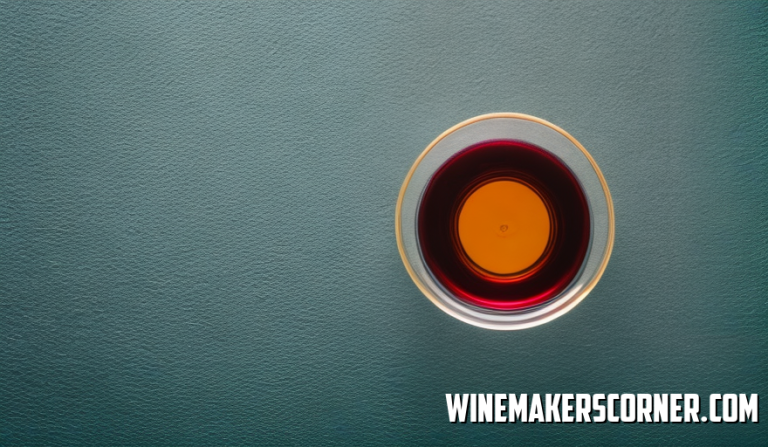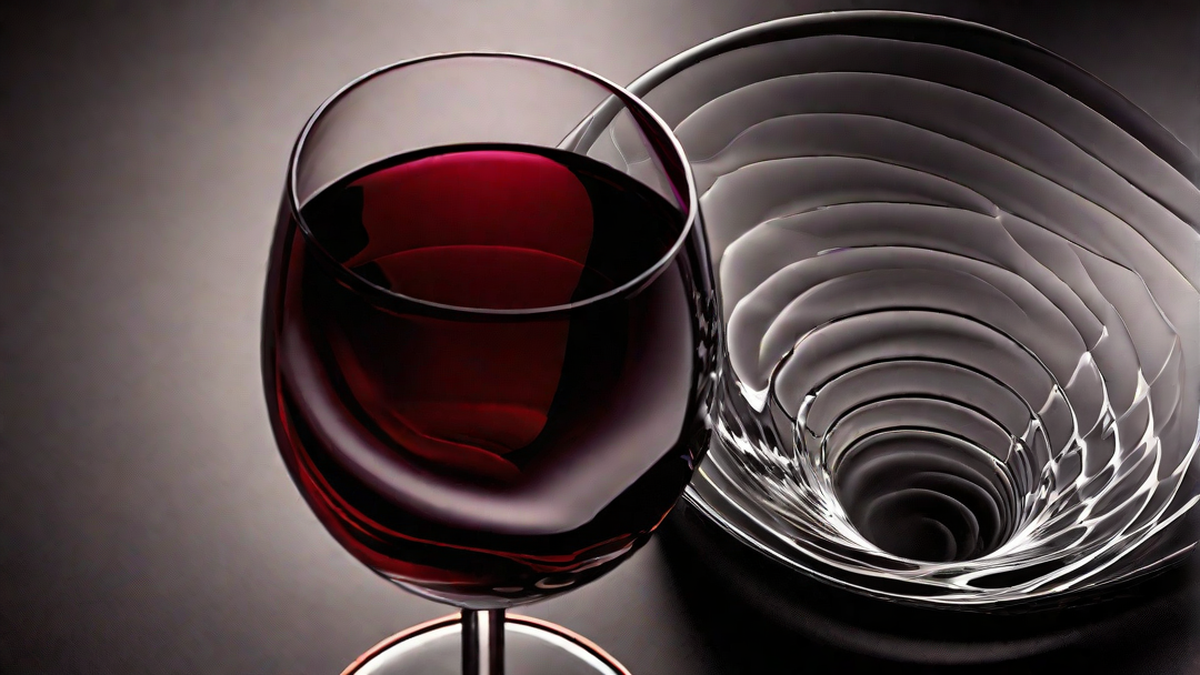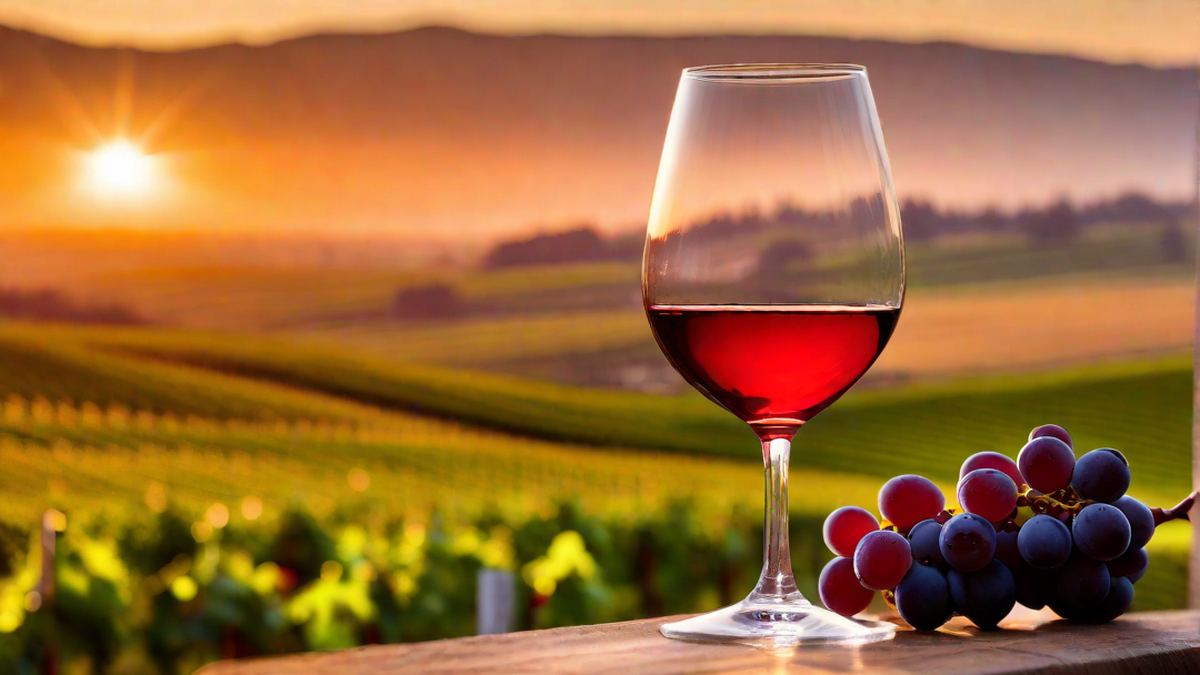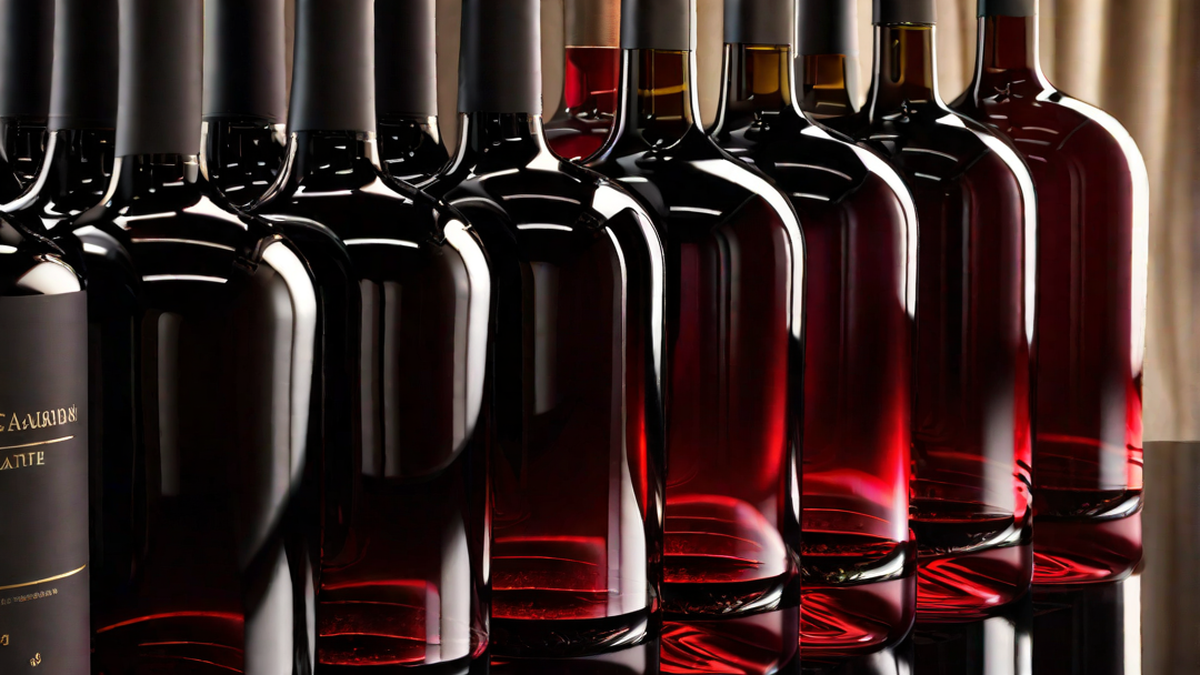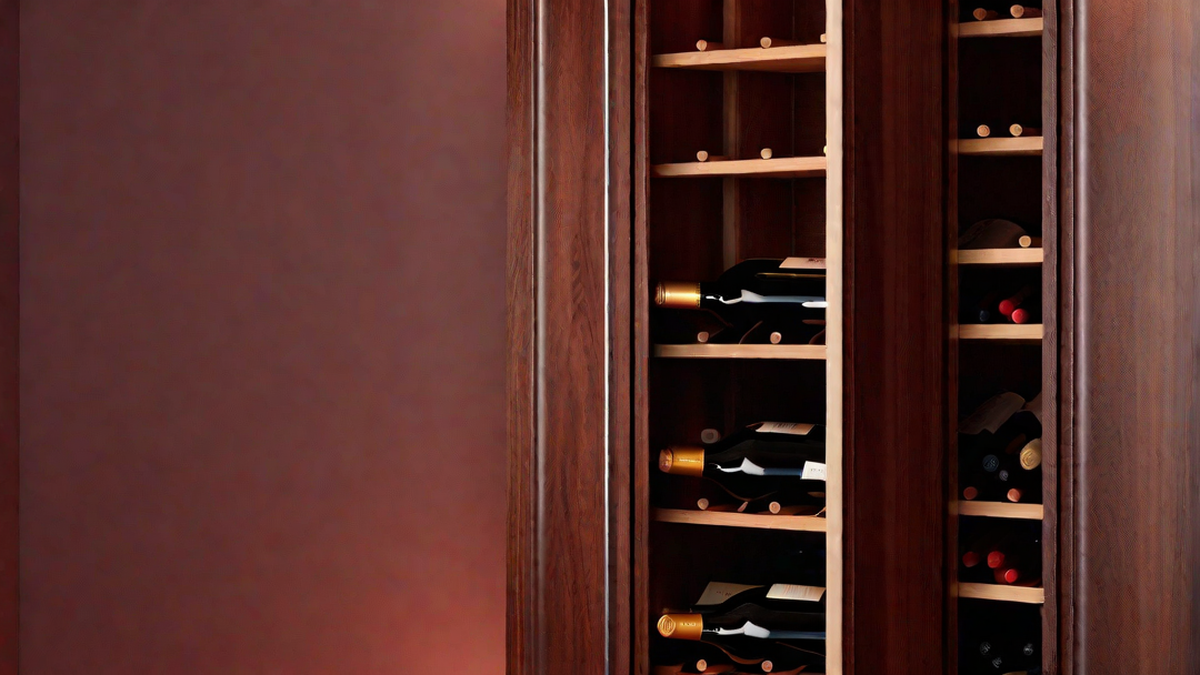Savoring each drop of exquisite wine is nothing short of euphoric – with its symphony of flavors dancing upon our tongues! But what if we told you there were ways to turn the volume even louder on those heavenly notes?
Fear not, fellow enthusiasts; we’ve got just the tips for elevating every glass from good to great! Join us as we venture into this intriguing world and discover how a few modifications can bring depth, richness, and compelling appeal to our favorite vintages.
Table of Contents
Choose the Right Wine Glass
When enjoying wine, selecting the right glass can make all the difference. Though it may seem like a small detail choosing the perfect vessel can elevate your wine experience by enhancing its flavor, body, and richness. In this article, we’ll examine why picking the right wine glass is so important.
Firstly let’s consider the shape of your glass. Different wines require specific conditions to express their unique characteristics fully. For example, red wines benefit from glasses with more giant bowls that allow more surface area to be exposed to air. This helps release complex aromas and flavors. On the other hand, white wines are usually best suited for smaller bowls that help maintain cooler temperatures and preserve their delicate notes.
Another critical factor to remember is the rim of your chosen glassware. A thin and smooth edge allows for a seamless flow of wine onto your palate while enhancing its taste profile. Conversely, a thick or rolled edge can disrupt this harmony and negatively impact your enjoyment of the wine.
Lastly, it’s worth considering whether you prefer stemless or stemmed glasses. Although stemless options are popular due to their casual feel and trendy aesthetic, they can cause unintentional warming of your wine due to heat transfer from your hands – something to keep in mind next time you reach for one! It’s important to note that stems prove beneficial in regulating temperature swings- something that cannot be overlooked when drinking white or sparkling wines. Furthermore, we must not undervalue the role of glassware! Specifically, crystal glasses have garnered recognition for their clarity and ability to bring out wine’s actual color and viscosity- rendering each sip an elevated experience.
Henceforth, it is wise to devote time to selecting appropriate glassware that augments flavors while infusing richness into every pour- making you a true connoisseur!
Decant Your Wine
Decanting wine – does it make a difference? You might be inclined to think not, given how fiddly the process can sometimes be. However, there are many benefits to doing so that are worth considering. Simply put, decanting involves moving your wine from one container (typically its original bottle) into another vessel (often a decanter) where it has more room to breathe and interact with oxygen fully.
This unlocks hidden flavor profiles you wouldn’t get if you sipped directly from the bottle! For instance, younger wines have solid tannins and bold flavors that need softening through oxidation for a smoother taste and aroma – something easily achieved by decanting them first. Similarly, older wines often gather sediment over time which needs separating from their liquid component before drinking – this keeps things clean tasting rather than gritty or off-putting. And finally, let’s not forget how aesthetically pleasing serving wine in an exquisite crystal decanter can be for all occasions – it’s a visual feast as much as a taste sensation! Whether or not you should decant your wine is a decision that depends on a few different things. First, there are your taste preferences to consider.
Then there’s the type of wine you’re working with – different varietals can benefit from different amounts of breathing time. Finally, there’s the bottle’s age – older wines generally require more time in the decanter than their younger counterparts. In any case, don’t hesitate to give decanting a try! This easy technique can pack a big punch when enhancing your favorite vintage’s taste and complexity.
Serve at the Correct Temperature
It’s known among wine enthusiasts that serving your favorite bottle at its ideal temperature can do wonders for elevating its overall flavor profile. Despite this being common knowledge amongst connoisseurs, many casual drinkers overlook this vital aspect of enjoying wine. This article explores why temperature is essential in enhancing your wine experience.
Temperature matters when consuming a bottle of wine, and it directly affects how we perceive its delicate balance of flavors and aromas. If served at the wrong temperature, specific notes will either be muted or enhanced, which can significantly impact our enjoyment of it – getting this right is, therefore, crucial to experience your wine to its full potential. When serving red wines, aim for between 60 65°F (16 18°C) – this will allow their complex layers to unfold as slowly as they should. Doing reds at too high a temperature might come across as overly alcoholic or have an overpowering tannic taste; conversely, serving them too cold results in duller flavors.
White wines, on the other hand, thrive best at a slightly cooler temperature, around 50 55°F (10 13°C). This highlights their natural crisp acidity and bright fruit notes without masking any subtler flavors. Too cold, however, might diminish the zinester of wine while being too warm forth an unpleasant bitterness.
The ideal serving temperature is more excellent than most other wines – around 45 50°F (7 10°C) for sparkling wines that sparkle with life and enthusiasm. It can lose its signature fizz and freshness if the bubbly gets too warm. So how do you ensure your wine is served at just the right temperature?
For white or sparkling varieties in a home fridge set at around 37°F (3°C), simply taking them out about half an hour before serving should be sufficient. To bring reds down to optimal drinking conditions (around 72°F / 22°C), first, stick them in the fridge for roughly half an hour.
The temperature has a significant impact on how your wine tastes and feels! By paying attention to this often-overlooked detail, you’ll enjoy a truly elevated drinking experience that allows each glass to reveal its depth, body, and richness. Cheers!
Pair with Complementary Foods
Pairing wine with complementary foods is an art form that truly brings out the best in both, just like a graceful dance! The key to achieving this magical experience lies in selecting the perfect wine partner- this can elevate your tasting experience and add richness and depth to every sip. To make this journey pleasurable, let’s explore some simple tips that will help create flawless pairings. To start creating impeccable pairings for yourself, consider the weight and intensity of your wine.
Bold reds work wonderfully well with hearty dishes, while lighter whites go ideally well with lighter fare! So if you want to impress guests or yourself with an exquisite dining experience, pair that robust Cabernet Sauvignon with a juicy steak; alternatively, opt for a crisp Sauvignon Blanc for that perfect match alongside fresh salad! The next step is examining the primary flavors present in your chosen dish. What are they- spicy? Savory?
Sweet perhaps? By identifying these characteristics firsthand, you can select wines that complement or contrast them effectively. For instance: slightly sweet wines like Riesling or Gewürztraminer are perfect for cooling down the heat of spicy foods.
Acidity is also essential to remember when pairing wine with food, especially high-acid wines like Chardonnay or Pinot Noir; they do wonders in cleansing the palate between bites when paired with rich dishes preventing sensory overload! However, pairing low-acid wines with specific foods might not bring out their best qualities and leave flavors feeling unremarkable. This is where tannins come in – a naturally occurring compound in full-bodied red wines that provides a drying sensation in the mouth. Consider consuming fatty foods such as marbled meats or creamy cheeses alongside your tannic wine to soften its edges.
Remember that there’s no right or wrong way to pair wine and food since taste is subjective. Use these tips as suggestions to guide you toward new flavor combinations and embark on an exciting culinary journey that will revolutionize your wine experience! In summary, complementing wine with compatible foods is critical to unlocking its richness and body while considering weightiness, the intensity of primary flavors present within each dish or bottle of vino (including acidity), and tannin levels. So go bravely into culinary marvels, knowing you’ll be unlocking the true potential of your favorite bottle of vino.
Experiment with Aeration Techniques
Want to upgrade your wine game? Then why not explore different aeration techniques to enhance your favorite bottle’s flavor profile? Aeration is simply the process of exposing the wine to air so that it can “breathe.” Doing this can add body and richness for a more enjoyable sipping experience.
One classic method uses a sleek decanter which maximizes surface area and accelerates oxidation processes. Gently swirling the wine around in this glass vessel allows enough time for magic to happen before serving after thirty minutes of rest! Be prepared for an impressive transformation of taste!
If you prefer an effortless technique requiring no special equipment, consider trying the “splash” method instead: Pouring dramatically from six inches above into your drinking glass will release aromatic compounds, quickly boosting flavors! For those who are always busy but still want rich-tasting wine – worry not! Aerators have your back with easy-to-use gadgets designed for attaching straight onto the top of bottles. These devices mimic traditional methods by infusing air as you pour, making tasty outcomes quick and easy. With various designs that cater to your preferences, you won’t regret the decision! Remember: not every type of wine requires aeration for it to shine! If you’re working with delicate or aged bottles introducing too much oxygen could detract from their nuanced flavor profiles. TIt’sherefore, you must try out various aeration methods and observe how they impact each bottle in turn. Don’t shy away from experimenting with these techniques, though–doing so could unlock the full potential of your favorite wines! With perseverance and an open mind, you’re bound to discover which aeration method works best for your taste buds alone; by doing so, elevate every glass of wine you ever drink again.
Store Your Wine Properly
The world of wine storage is critical for true oenophiles who cherish their collections’ flavor profiles and aging potential. However, achieving these results requires taking diligent care in proper storage techniques- but don’t be discouraged! By following some straightforward guidelines, you’ll soon be able to enjoy the perfect glass every single time. Let’s start with temperature: maintaining a consistent 55°F (13°C) is critical for optimal results.
Too warm or cold will negatively impact wine quality and hinder its aging potential. Next comes humidity levels: keep it at around 70% to prevent cork damage and unwanted air contact – two common culprits that can impact spoilage and lead to unwanted expenses. Light exposure should also be kept in dim settings, as direct sunlight or fluorescent lights can alter wine flavor profiles substantially over time. Finally, optimize bottle orientation; storing them horizontally keeps corks moisturized and prevents oxygen infiltration, which could otherwise harm both taste profile & aging ability alike! If you’re serious about wine appreciation, limiting vibration is essential for preserving its quality. Unnecessary movement can disrupt sediment formation in older wines, creating an undesirably gritty texture after pouring. Moreover, proper categorization by type, region, or vintage enables easy selection of that perfect bottle to complement any occasion or mealtime. To sum up: Temperature control; keeping humidity levels optimal; managing light exposure; properly orientating bottles to keep corks moist; controlling vibrations; and effective organization is all necessary steps towards proper wine storage management.
These simple modifications enhance flavor profiles while imparting body and richness on every sip – here are cheers!
Understand the Importance of Aging
Many overlook the impact that aging has on wine’s flavor development despite it being crucially important. It’s essential to thoroughly comprehend how it affects your favorite beverage’s body and richness. Aging enables wines to evolve by unlocking complexities that bolster their overall character significantly; therefore, why does aging matter?
Simply put, time works wonders on wine! When left inside barrels or bottles for extended periods- chemical reactions occur within the liquid that causes changes in aroma, taste, plus mouthfeel, transforming immature vessels into more sophisticated ones with greater harmony; thus allowing you to experience all the beautiful dimensions of your chosen drink fully.
Now let’s delve into two primary methods for aging- barrel-based vs. bottle-based methods. Both play an instrumental role in shaping each bottle’s unique profile but perform their work differently. Barrel aging exposes the liquid gradually to oxygen, which softens tannins while supplying various woody flavors such as vanilla or toasted oak notes.
Whereas bottle aging occurs in a controlled oxygen-free environment, enabling subtle nuances to develop through interactions between the compounds in the liquid.
Knowing when to drink your wine can be as much an art form as tasting and choosing.
Aging wine is a delicate process – some varietals thrive over time while others are best-savored young. Factors such as grape type and winemaking techniques influence when we should open our bottles. But how can we discern when it’s precisely the right time?
The answer lies in paying attention to our senses! Color changes are crucial – a deeper hue suggests full maturity. Fragrances also provide essential clues – compare fruity undertones with earthier ones to track how your bottle evolves. Understanding the value of aging unlocks new levels of appreciation for wine connoisseurs, revealing previously hidden dimensions with every glass.
Letting wines mature gracefully yields a sensational richness and complexity for every sip, creating an unforgettable tasting experience every time you raise your glass.
Learn About Tannins and Acidity
Enhancing the flavor of your favorite beverage requires an understanding of two elements – tannins & acidity! Tannins occur naturally in grape skins, seeds & stems; they play an essential role in providing mouthfeel by creating that puckering sensation we associate with reds. Balanced tannin structures enrich natural flavors while aging gracefully over time as well! Acidity is another crucial component – it provides liveliness on the tongue & keeps flavors bright and fresh! When drinking wines high in acid content (such as crisp whites or zesty reds), they tend to be more food-friendly by cutting through rich dishes seamlessly! To better appreciate both elements, try this test – compare two different wines side by side! High tannin content can come from bold Cabernet Sauvignon, while high acidity can be found in zesty Sauvignon Blanc! Ever wondered why some wines make your mouth water more than others? The answer lies in essential elements that work magic on our palates.
But now that we’ve learned their roles, let’s apply this knowledge and enhance our wine-tasting experience! Here are some tips:
1. Decanting: Pouring wine into a decanter aerates it softening tannins and unlocking its trapped aromas for fuller flavor. 2.
Temperature: Red wines taste best when slightly cooled below room temperature (60 65°F) as it helps manage tannins; serve white wines chilled (45 50°F), so their refreshing acidity can shine through. 3. Food pairing: Pair bold tannic reds with rich proteins like steak or lamb; match acidic whites with creamy dishes or fatty fish for an excellent balance of flavors.
By incorporating these simple techniques, we can enjoy our wine’s full range of flavors. Let’s raise a glass and toast to better wine-tasting experiences!
